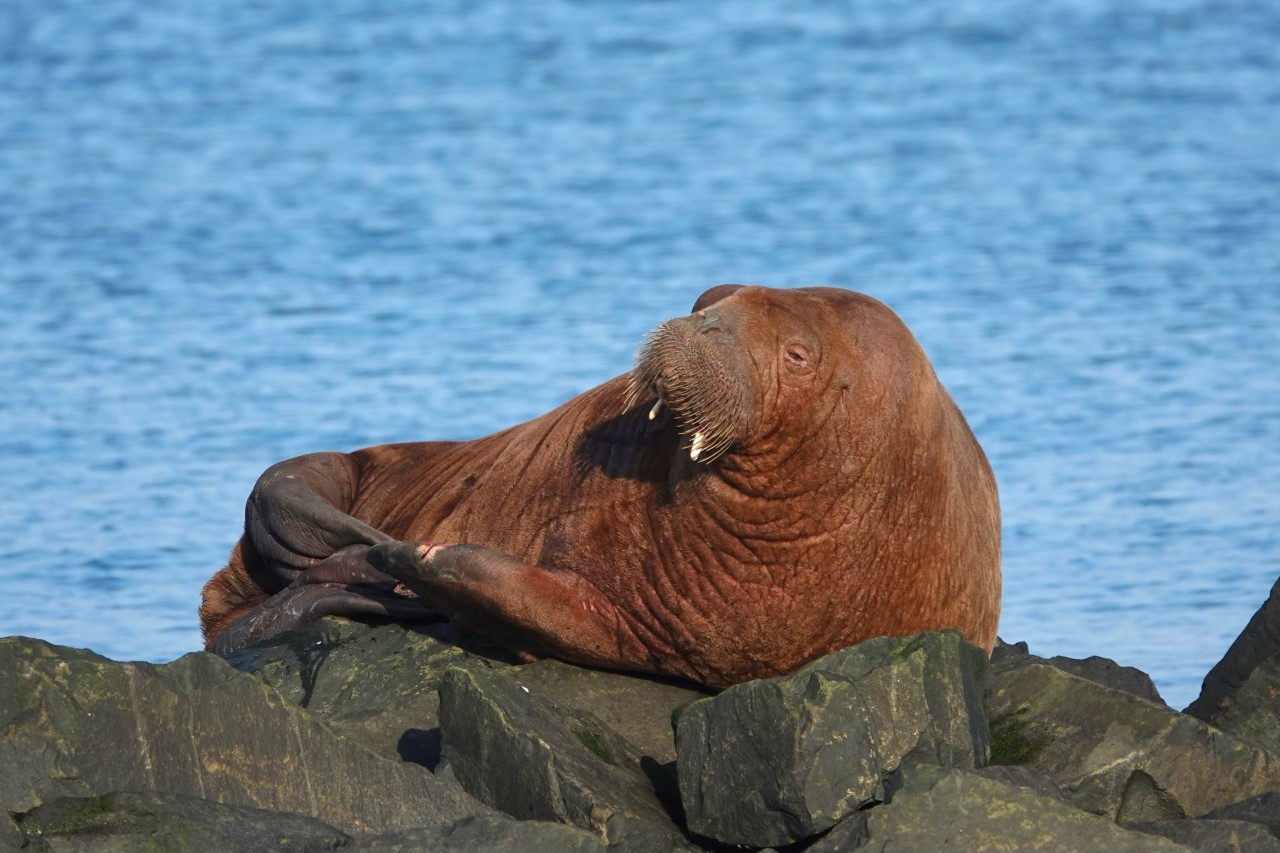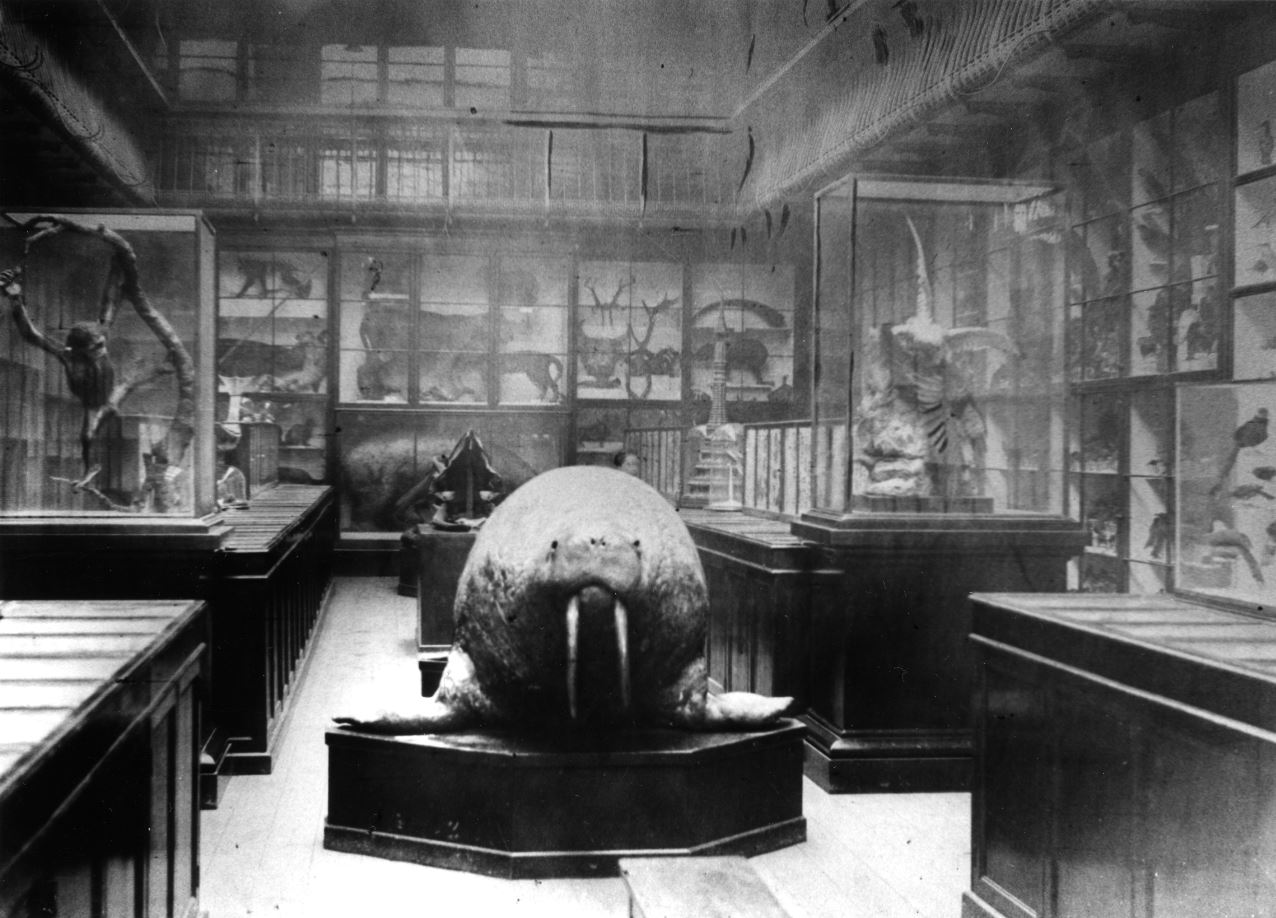In December, a wandering Walrus called Thor made his way to Hampshire. Then, he was seen in Scarborough on New Year’s Eve, becoming Yorkshire’s first. Making his way North, Thor was recently spotted in Blyth, making the day of some lucky onlookers.
A Day to Remember
NHSN Members, Alan and Janet Janes, made the journey to Blyth to see Thor.
On Monday 2 January we were lured to Blyth South Harbour after news had broken that Thor the Walrus had been seen resting on a pontoon at the Royal Northumberland Yacht Club, which is situated within the harbour.
Alan and Janet Janes
It was a cold, clear day with a cloudless azure blue sky. Having missed the appearance of Freya the Walrus last year in Seahouses Harbour we were keen to witness the arrival of Thor.
By the time we arrived the area was quite busy with an assembly of around 200 people including some expert wildlife photographers, the familiar faces of local birders, and an encouraging array of members of the general public including families with young children and teenagers, all showing a great deal of interest.
The Walrus was immediately apparent on the most distant pontoon which was at a safe distance from the public. We were impressed by the enormous size of the animal and its tan hue in the afternoon sunlight. It was initially asleep with its back to us but woke and turned around showing a pair of enormously long tusks.
Thanks must be paid to the British Divers Marine Life Rescue (BDMLR) who were monitoring the situation at Blyth and who reported the news that Thor departed for the open sea on Tuesday 3 January at 6.30am.
Recognised by their iconic tusks, the Atlantic Walrus can be found in the Arctic Ocean, around the North Pole, from Canada and Greenland to Svalbard and Russia. They are social animals, spending much of their lives on sea ice looking for molluscs and crustaceans to eat. They are huge, weighing on average 900kg and never usually venture far from their home in the far North.
Recently, however, Walrus sightings have recently been delighting people across the UK. With the appearance of Thor In Scarborough, the New Year firework display was cancelled. A rare act of consideration for nature. Thor was allowed to rest and go on his way. Efforts to make sure the animal remained undisturbed were praised, paving the way for positive future visits.
Three individuals have made their way to the UK recently. Including Thor, Wally, who spent time in Wales and Freya, who appeared in Seahouses before heading to Shetland. Sightings are rare although not unheard of, with eight confirmed since 1979.
At each sighting, dedicated volunteers monitor the wandering Walruses, protecting them from eager onlookers. It is hoped that they eventually is make their way back north, towards the Arctic.

Why Are We Seeing More Walrus?
It’s not uncommon for young Atlantic Walrus to roam, although the UK is usually too far. Males are more likely to roam than females, and the male Walrus seen at Blyth was young, demonstrated by his size and smaller tusks. Walrus reach sexual maturity at seven, so it is very likely that both Thor and Wally were younger than this, biding their time until they are large enough to fight for mates and territory. Walrus travel quickly and for example, Wally covered 280 miles travelling from County Kerry in Ireland to Pembrokeshire in just 6 days and Thor arrived in Blyth from Scarborough in under a day. This has allowed them to cover large areas in a short amount of time.
Climate change may also have an impact on the frequency we see them. A reduction in sea ice reduces habitat for Walrus to rest and breed, meaning they may travel further in search of areas with good food supplies and resting spots. Other species are also being affected, with Bearded, Ringed and Hooded Seals making an appearance far further south than expected.
This is the second record of a Walrus in Northumberland, will we see more in the future? If you are lucky enough to see one, remember to keep your distance and alert British Divers Marine Life Rescue.
From the Archive

The Great North Museum: Hancock, has its’s own tale to tell about a Walrus, too. A large stuffed Walrus arrived at the museum and was displayed in 1836, but disappeared in 1891, it’s whereabouts remaining a mystery to this day.